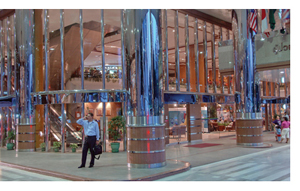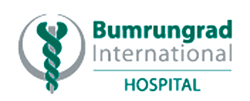| [articles] | ||
|
Tidbits re-Medical Travel Brazil through Industry Eyes
By Susie Ellis, Spa Finder Learning from a winner in Medical Tourism – Bumrungrad International Hospital, Thailand  • Bumrungrad Hospital in Bangkok, Thailand is the largest hospital in the world treating international patients. • Bumrungrad Hospital in Bangkok, Thailand is the largest hospital in the world treating international patients.• Bumrungrad looks like a 5 star hotel and gives people confidence and super service. (my experience also) • Bumrungrad takes care of over 400,000 international patients yearly. Over 1 million total from 190 different countries. (An entire floor just for the Japanese!) • The hospital’s return is 24 %. They are worth now over 1 billion! • After 9/11, Middle East patients began to go to Bumrungrad instead of to the US. • Bumrungrad hospital gets 1000 emails a day asking about coming for treatment. • Bumrungrad has over 150 interpreters in 17 languages. • Bumrungrad is traded on the stock exchange! (Lucky for us Curtis Schroeder, former Group CEO Bumrungrad International for 17 years, and Ruben Toral who was their marketing wizard for 7 years, both spoke at this Medical Travel Brazil Meeting giving us a glimpse into this very successful case study.) Lawsuits/Insurance  • Bumrungrad has offices all over the world but not in the US. Why? Because it increases their exposure to law suits. • Bumrungrad has offices all over the world but not in the US. Why? Because it increases their exposure to law suits.• Bumrungrad has a huge amount of patients and hardly any lawsuits. Why? They have such outstanding service which discourages lawsuits. Also, it is very complex to successfully sue. • There is no insurance available for the very high risk health travel procedures such as organ and bone marrow transplant. • Some insurance companies do reimburse for procedures done in other countries. • “If you are thinking of being a medical traveler and are concerned about whether you can sue… stay in the US.” Medical Tourism and Marketing in Brazil • 800,000 tourists come to Brazil each year. Paris gets 24 million! The whole country needs to do a better job marketing in general. • Hospitals are currently not marketing. They attract patients through personal referral for a specific doctor. • Best to get all hospitals in Brazil together and decide on one brand message (instead of each trying to do it on their own). • It’s clear that hospital CEO’s, although competitors, have to work together to attract foreign patients. • Panel of medical experts (dentistry, opthomology, diagnostics) seem more open to marketing collectively than the panel of hospital VIPs. • Interesting that Mexico was afraid of being known for lap band surgery Brazil is afraid of being known for cosmetic surgery. • Advisors suggest that this is an unwise strategy – rather start where you have momentum and then build up and branch out from there. • Advisors suggest getting the following right to attract medical travel to your country: service, brand experience, infrastructure, website, and marketing on the web. • Plastic surgery is generally not as profitable for a hospital as other procedures and it also causes the most headaches. • Hospitals and other medical professionals plan to get together now (after this historic meeting) to discuss next steps re working together and brand building. Bottom line conclusions for me and as I consider the spa industry: 1. A successful medical tourism industry requires not just excellence in medical but also marketing. 2. Interesting that in the successful example of Bumrungrad, the non- medical folks (management and marketing) were Americans. 3. Spas should take note that time and time again the key differentiator is service and marketing. 4. Better for the spa industry to position themselves under the umbrella of “wellness tourism” than under “medical tourism” where there are so many regulations and medical folks who are often quite rigid © MEDICALTOURISM MAGAZINE |
||||
 |
||||
|
|
||||